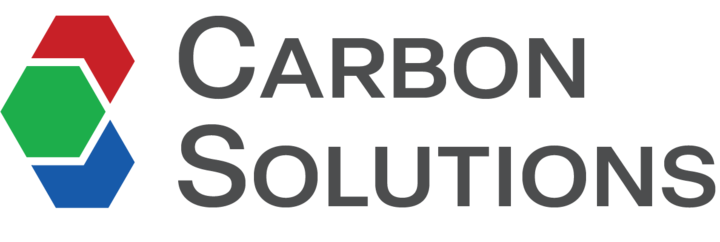Our Services
CO2 Capture and Co-Benefit Assessment
Capturable CO2 costs and health benefits through carbon capture and other decarbonization approaches using CO2NCORD and LOCAETA.
Identify and characterize CO2 capture and other decarbonization opportunities
Using our proprietary CO2NCORD and LOCAETA software, we identify and characterize CO2 capture and other decarbonization opportunities - such as fuel switching to hydrogen and electrification - including economics, lifecycle, health benefits calculations.
Our Approach
Providing in-depth analysis on the importance of carbon capture and decarbonization
Capturable Emissions Insight
Economic and Cost Analysis
Our service extends beyond environmental metrics to encompass a detailed economic analysis. We examine capture costs, carbon dioxide streams, fuels, carbon intensity, and supply curves to understand and assess economic opportunities for decarbonization.
Health Benefits Assessment
Leveraging demographics, public health indicators, emissions profiles, carbon capture technology, and more, we evaluate the broader benefits of carbon capture initiatives. With LOCAETA Data Explorer, users can visualize industrial emission impacts of a variety of decarbonization pathways, illustrating the potential for improved public health outcomes.
FAQs
Learn more about CO2 Capture and Co-Benefit Assessment and how it can benefit your organization.
What industrial sectors are considering capturing CO2?
Due to local, state, and national climate targets, as well as CO2 capture tax credits, many industries are considering capturing CO2. This includes typically “hard-to-abate” sectors, wherein typical decarbonization strategies are ineffective or difficult to implement due to technological or process constraints. Cement manufacturing, iron and steel, and chemical production are generally considered hard-to-abate, and are interested in carbon capture. Additionally, natural gas processing, hydrogen and ammonia manufacturing, and power plants have announced or implemented carbon capture projects.
What are co-benefits?
What capture technologies are considered for LOCAETA?
What capture technologies are considered for CO2NCORD?
CO2NCORD currently evaluates capturable CO2 and the likely cost per tonne from the perspective of installing amine-based carbon capture. However, other technologies are likely to be considered in the future.
Who should use CO2NCORD?
CO2NCORD helps industrial emitters, CO2 pipeline developers, CO2 storage owners, carbon capture providers, and researchers to identify capturable CO2 and screen for low-cost capture within an area of their choice. This allows for both in-depth assessment of a small area and national assessment of capturable sources. Additionally, CO2NCORD performs a preliminary LCA analysis of installing carbon capture, which can help decision makers to optimize their decarbonization approach.
Who should use LOCAETA?
LOCAETA helps regulators, governmental agencies, community groups, NGOs, industry professionals, and ESG investing businesses understand the air quality impacts and co-benefits associated with various decarbonization options for industrial facilities, including carbon capture, electrification, and fuel-switching. LOCAETA focuses on community-level air quality and public health impacts, as well as the economic benefits of improved air quality. It is therefore of use in decision support and community engagement around decarbonization projects (for example, to assess the relative air quality impacts of different options, or to quantify and communicate the co-benefits of a particular decarbonization approach).
How can I get started with LCA?
Beginning with LCA involves understanding the four main phases and all the potential methods for classifying impacts. Further, it is important to follow ISO 14040 and 14044 standards for a successful and complete LCA. There are numerous LCA softwares available for different users, some of which are paid (SimaPro) and others which are free (OpenLCA). It can be also important to consult with experts or those who have knowledge of conducting LCA’s before engaging with your own.
Information Hub
Our CO2 Capture and Co-Benefit Assessment Projects
Using CO2NCORD and LOCAETA, we have helped clients understand how individual facilities and entire sectors will decarbonize.

Our Team
Specialist in Carbon Capture and Co-Benefit Assessment

Amy Jordan
Research Scientist
Amy is a hydrologist with professional experience in astrophysical, planetary, and earth sciences with a focus on numerical modeling of complex systems.
She provides expertise on air quality co-benefits to decarbonization, groundwater remediation, nuclear waste repository performance, geologic carbon sequestration, and nuclear nonproliferation at Carbon Solutions.

Kat Sale
Research Engineer
Kat is a chemical engineer who focuses on life cycle analysis and techno-economic assessment.
She supports projects by better characterizing point-source emissions and direct-air carbon capture technology.

Kelly Graham
Research Scientist
Kelly has experience using global atmospheric chemistry models, along with satellite and in situ data, to understand carbon dioxide exchange in the Arctic Ocean.
She focuses on atmospheric science and modeling projects, integrating modeling, data science, and atmospheric chemistry at Carbon Solutions.

Yunha Lee
Research Scientist
Yunha is a computational scientist with experience in developing atmospheric models for air quality and climate applications, both physics and machine learning approaches.
She focuses on the socioeconomic impact assessments of low-carbon energy technology.
Client testimonials
Studies by Carbon Solutions have been very strategic with our internal resource planning and due diligence for the commercial deployment of CCS technologies. The models are interactive and can be updated as new generation planning and geological characterization data is obtained in the future. The Carbon Solutions team has always been very responsive and provided an excellent work product. I highly recommend their services and look forward to working with them in the future.
Richard Esposito
R&D Program Manager
Get in Touch
Have a question? Need more information? Contact us today.

